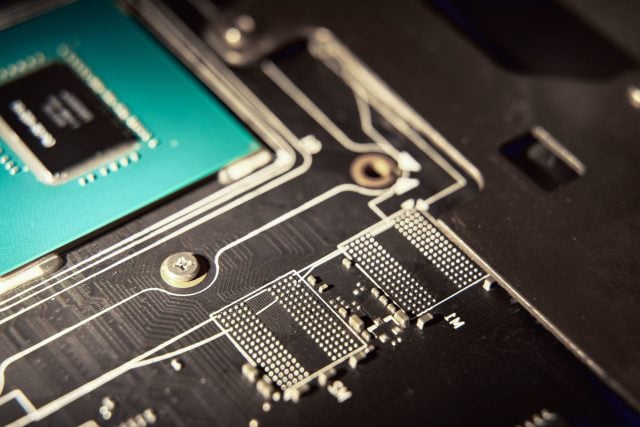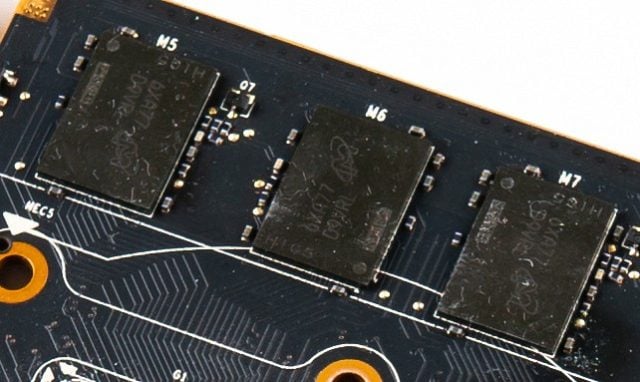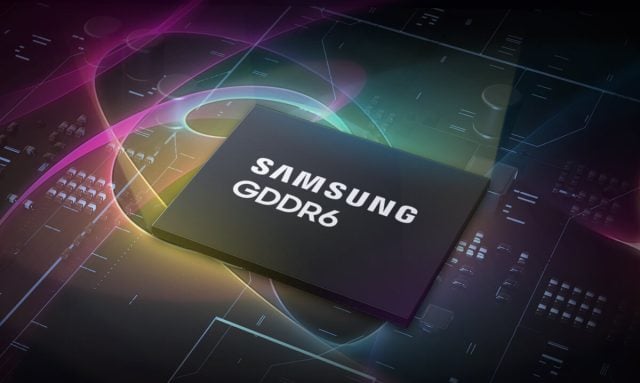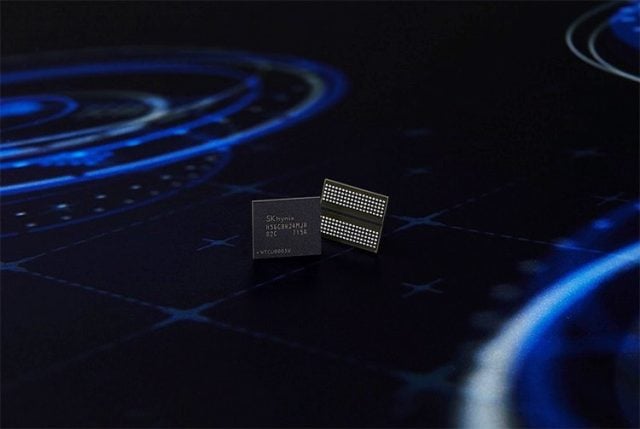What is the Difference Between GDDR6, GDDR6X and GDDR7 Memory?

Along with other technologies, memory technologies continue to develop depending on the needs of the industry. On the DRAM side, the DDR5 standard was introduced and spread to the market in a short time. As for graphics memories, GDDR7 will be on the market soon. Today we will take a look at the VRAM technologies in graphics cards: What are the differences between GDDR6, GDDR6X and GDDR7?
NVIDIA has relied on GDDR6 or GDDR6X memory since the GeForce RTX 2000 series. AMD, on the other hand, has been using GDDR6 technologies since the Radeon RX 5000 series. Apparently, this situation will change in the next series. The new generation graphics card memory GDDR7 is planned to be released in 2024.
At first, it was rumored that both AMD and NVIDIA would switch to GDDR7. Afterwards, it was said that the red team had given up on high-end models. If expectations come true, last generation memory technologies will not be used in the mid-upper segment RX 8000 cards. AMD will continue with GDDR6 for a while.
On the other hand, NVIDIA will most likely introduce GDDR7 memory technology with the RTX 5000 series. That seems certain. And there is Intel on the other side. We don’t know yet what the Blues will do with the Battlemage architecture. Now, these rumors aside, let’s look at the differences between the graphics memories called “GDDR”.
What is VRAM? What is the difference with RAM?
VRAM is the type of memory that a GPU (graphics card) uses to store information. The data held here is used to create images on the screen. All graphics cards contain a certain amount of VRAM, and this amount can affect the performance of the GPU depending on the usage scenario.
In fact, video memory is very similar to the memories used in standard technological devices. It is a type of RAM (Random Access Memory) specifically dedicated to the graphics card. It is not possible to use VRAM with the rest of the computer. Instead, it is integrated into the graphics card PCB to speed up the work of the graphics chip.
While regular RAM reads and stores data for the CPU, VRAM does the same job for your GPU. Generally, but not always, the more VRAM a graphics card has, the higher its performance because its connection with the computer’s RAM or processor is minimized. In other words, graphics memory acts as a buffer between the CPU and your display, which can affect frame rates in games or during video editing.

Regular RAMs such as DDR4 or DDR5 are technically used for all components in a computer. Essentially, it is tailored to the performance requirements of the CPU, which demands a stream of data really quickly rather than a lot of data at once. As a result, DDR memory is always oriented towards low latency (in nanoseconds) and bandwidth, usually measured in gigabytes per second, is very important.
Graphics processors have very different requirements on the memory side. GPUs use it to access textures, frame buffering (which defines to the GPU where to place individual pixels in a frame), and other graphics information stored in RAM that can operate with relatively high latency. It requires a lot of memory bandwidth. So VRAM is not only custom-made to fit graphics processors, but is also as close to the GPU as physically possible.
What is GDDR7?
GDDR7 is a type of memory that will be used in graphics cards that will come in the coming years. Along with bandwidth, increases in memory capacity will also be provided. Lately we see that even not very heavy AAA games need 12 GB or more of GPU memory. That’s why GDDR7 is of great importance. The increase in capacity along with performance is also a significant increase.
The GDDR7 standard will offer speeds of up to 36 Gb/s, doubling the 18 Gb/s speed offered by GDDR6. With high data speeds, approximately 1,728 TB/sec bandwidth will be achieved on the graphics card with a 384-bit data bus. By the way, let us remind you that the upcoming RTX 4090 theoretically provides a bandwidth of 1 TB / s.
GDDR7 delivers major performance upgrades over GDDR6 and GDDR6X supported cards by improving data throughput, increasing bandwidth, and providing better power efficiency will bring. With all the improvements, maximum data transfer speeds will increase significantly. For example, GDDR6X memory operates with a maximum capacity of 24 Gbps, and GDDR6 operates with a maximum capacity of 20 Gbps.

GDDR7 is tuned to run at 32 Gbps, which is a huge increase over GDDR6X. However, we expect to see data transfer speeds well beyond 32 Gbps in the future. Faster memory chips are being developed, such as GDDR6X, perhaps called GDDR7X.
As a result, we expect the performance gains from the new graphics memory to be high, along with significantly increased data transfer speeds.
GDDR7 vs GDDR6X vs GDDR6
Semiconductor standards organization JEDEC officially approved the new standard by publishing the GDDR7 specifications in March 2024. There were minor differences between GDDR6 and GDDR6X in terms of data transfer speeds. A more radical change will occur with GDDR7.
When switching from GDDR6 to GDDR6X, the signaling type also changed, thus providing healthier data transfer at higher speeds. With GDDR7, technology will be taken one step further.
On the other hand, VRAM capacity has become much more important lately. A single GDDR7 memory chip will be able to reach 64 gigabit capacity. In this way, manufacturers will be able to reach higher capacities with fewer chips.
| GDDR6 | GDDR6X | GDDR7 | |
|---|---|---|---|
| Gbps per pin | up to 20Gbps | up to 24Gbps | up to 32Gbps |
| Chip Density | Up to 32Gb (gigabit) per chip | Up to 32Gb (gigabit) per chip | Up to 64Gb (gigabit) per chip |
| Maximum Density | 512 GB with 32 chips | 1 TB with 32 chips | 2 TB with 32 chips |
| Data Rate | Up to 512 GB/s (32 chips) | Up to 672 GB/s (32 chips) | Up to 1024 GB/s (32 chips) |
| Signaling Type | NRZ | PAM4 | PAM3 |
| Voltage Level | 1.35V | 1.35V | 1.20 V (core and I/O) |
What Will GDDR7 Bring?
High Data Speeds
The most important benefit of GDDR7 is high transfer performance. This means that serious performance increases can be experienced in games even “only due to memory”. Performance will also increase in different workloads focused on VRAM. GDDR6 could process up to 20 Gbps (gigabits per second) per pin, this increased to 24 Gbps with GDDR6X. . With GDDR7, we will easily see speeds such as 32 Gbps. In fact, according to some sources, memory manufacturer SK Hynix is working on 40 Gbps chips.
This increase in the data of the data, more data between the GPU and the memory can be carried out in a certain way, can be reduced and graphically even more flowing in the scenarios that can be reduced, darboäÿazlar. It means that they can be provided. In addition to higher frame rates, VRAM-related stuttering and lags will also be improved. What does all this mean for players? Higher resolution textures will load faster, delay will decrease, and the overall fluidity and responsiveness of the game will increase.
Important: PAM3
PAM3 (three-level Pulse Amplitude Modulation), which stands for three-level Pulse Amplitude Modulation, is a signal transfer technology used in GDDR7 to increase the performance of graphics memory. Unlike traditional binary signal methods (with each signal pulse being a 0 or 1), PAM3 uses three different voltage levels. This allows each pulse to encode more information, specifically one of three possible values (0, 1 or 2), with a corresponding increase in clock speed. It can effectively increase the data transfer speed without

With the adoption of PAM3 in GDDR7, significantly higher data transfer rates can be offered compared to previous generations. In this way, graphics are processed faster and more smoothly, while higher resolutions and more detailed visual effects can be achieved with less load on the system.
It may be surprising to see that GDDR6X uses PAM4 encoding, which allows for four different voltage levels. However, JEDEC, the organization responsible for these works, found PAM3 more stable and efficient for GDDR7.
Power and Thermal Management
With the improvements in GDDR7, power efficiency will increase, thus providing better power management. High efficiency also means keeping temperatures under control. This means that GDDR7 chips will not overheat when operating at high speeds.
First of all, GDDR7 memories consume approximately 20% less power than GDDR6. Second, GDDR7 requires a lower operating voltage of 1.20 volts for the core and I/O, compared to the 1.35 volts typically used in GDDR6 and GDDR6X. Lower voltage levels will reduce overall power consumption and improve energy efficiency.
Reducing power consumption will also be beneficial for heated GPUs and video card components. Additionally, Samsung’s GDDR7 memory uses entirely new package materials and optimized circuit designs to reduce heat generation. Ultimately, memory chips will heat up less, stay at higher frequencies, and emit less heat to surrounding components.
Samsung has completed the development process of GDDR7 memories with a data transfer rate of 32 GT/s. Although we have seen announcements about GDDR7, there are no products officially on the market yet. Although there is no exact date, the new memories are expected to arrive in late 2024 or early 2025. We are already expecting NVIDIA’s GeForce RTX 5000 series graphics cards at that time.
- 25% better power efficiency than GDDR6.
- Up to 32 Gbps and potential higher speeds in the future.
- GDDR7 will allow three-bit data transfer in two cycles using the PAM3 signal.
- Bandwidth up to 1,536 TB/s.
- PAM3 encoding/decoding complexity has been eliminated with thermal management in packaging.
- GDDR7 is expected to find a place in workstations, PCs, game consoles, artificial intelligence and HPC.
Is GDDR6X Faster Than DDR5?
Yes. GDDR6X (Graphics Double Data Rate 6X) is faster than DDR5 (Double Data Rate 5) on paper. GDDR6X is a GDDR6 derivative designed specifically for high-performance graphics cards. Compared to DDR5, it offers higher data transfer speeds and increased memory bandwidth, making it easier to work in graphics-intensive applications . Öte On the other hand, DDR5 is a new generation DDR memory technology that provides improved performance and efficiency compared to its predecessor, DDR4, which is primarily used in computer systems and servers.
What About GDDR6?
GDDR6 memories are currently used in various high-performance graphics cards and game consoles. It will not be thrown away immediately and will continue to be used for a while.
GDDR6 also offers faster data transfer speeds, higher bandwidth and improved power efficiency compared to its predecessor GDDR5. It is designed specifically for graphics-intensive applications and provides advanced performance for gaming, multimedia and other graphics-related tasks.

